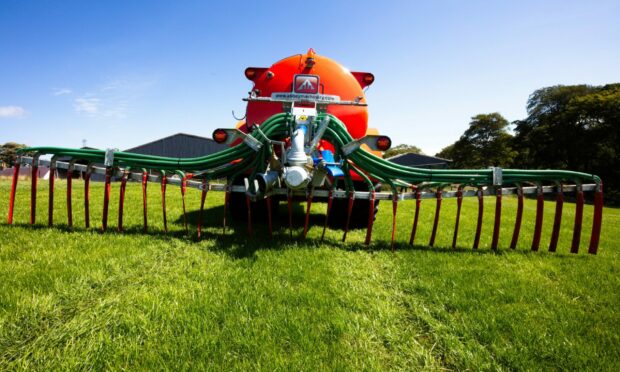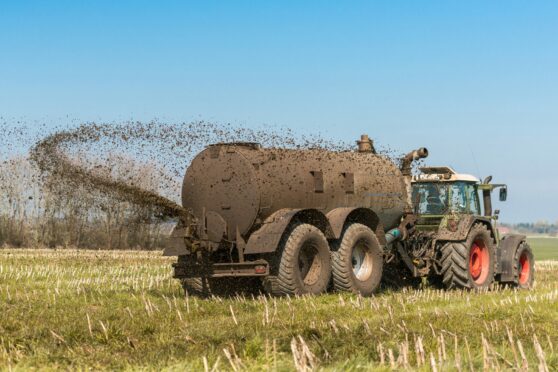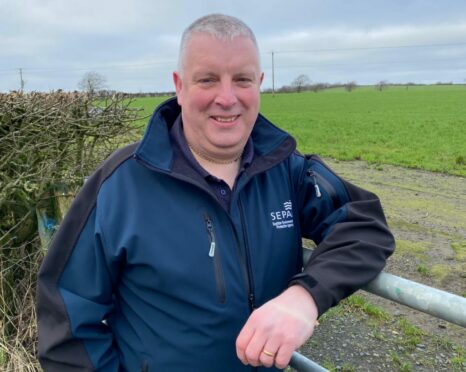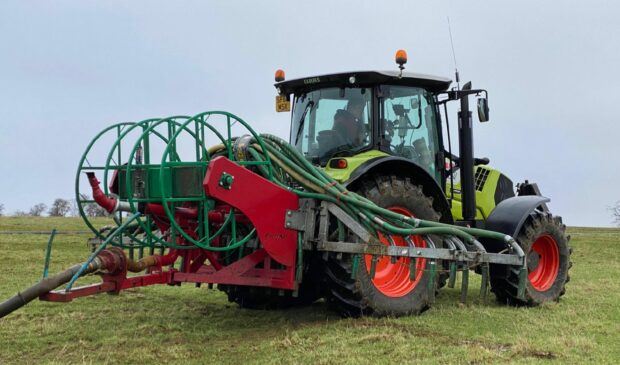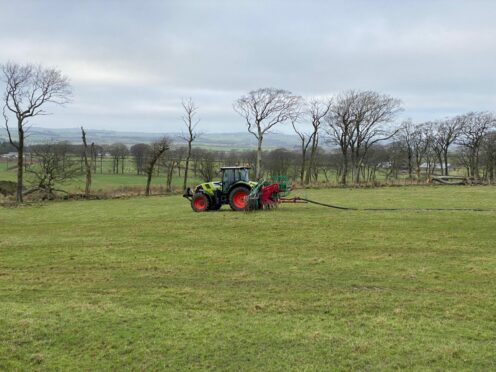Slurry isn’t the most obvious candidate for the age of precision farming but new regulations introduced this month mean conventional spreading methods such as splash plates will soon be history.
The change will mean significant investment for the farming industry, but there are benefits too as targeted spreading will maximise the benefits from nutrients, reduce soil compaction and minimise diffuse pollution and emissions.
The new regulations are being phased in over the next five years, but trailing shoes, dribble bars and injection methods are already gaining in popularity, and with fertiliser prices still soaring, every last nutrient is valued more than ever before.
The new rules mean farms will be required to have adequate slurry storage – 22 weeks for those keeping cattle and 26 weeks for pigs – but if storage improvements are needed, the changes will be phased in over five years.
The government’s watchdog, the Scottish Environmental Protection Agency (SEPA) attracted criticism for its heavy-handed approach to enforcement in the past, but in recent years it says it has adopted a more pragmatic approach which has brought some impressive results.
Stephen Field, SEPA’s Land Unit Manager, says his team has been on 6000 farming units across Scotland in the last 10 years, focusing on 57 priority catchments, and only two enforcement notices, carrying fines of £600 each, have been issued.
“We’ve got to be out there and engaging with farmers rather than waiting for a pollution incident then fining them. That doesn’t work on the ground,” he says.
“It’s time for regulators to engage and be more pragmatic on the ground and try to educate farmers. Farmers have a wealth of other regulations to comply with as well as run their businesses. We’re looking for them to have a business plan and be investing for the future.”
In Ayrshire’s five priority catchments alone, Scottish Government support has helped farmers invest £50m in improvements such as additional slurry storage, fencing, livestock tracks and alternative livestock watering , and in many cases farmers have gone further than is legally required to help protect the water environment from agricultural activities.
Around 270 farmers in the River Ayr catchment and another 150 on the Doon engaged with Scottish Water and private homeowners in the effort to cut diffuse pollution in bathing waters.
Stephen Field says the effort has brought “superb” results.
“The effort has been held up as an exemplar across Europe of how to work with agriculture because we didn’t achieve it by enforcing regulations and fining farmers – we worked with them to reach standards.”
Willie Campbell, one of the dairy farmers involved in multi-agency effort, has invested in extra slurry storage and now has enough for 25 weeks.
He said SEPA’s attitude had worked well for him. “Working with SEPA, our neighbours and Scotland’s Rural College meant we’ve spent money in the right ways – and we’ve spent a lot! But the investment has also allowed us to become more efficient and reduce pollution from the farm.
“We’re capturing more carbon and we’ve done our best to reduce diffuse pollution. We’ve put in cow tracks so we’re preventing poaching, and we’re getting more out of the slurry. So there has been significant investment but hopefully of a type we can recoup.”
NFU Scotland‘s regional manager, Christine Cuthbertson praised local farmers for their approach.
She said: “The partnership approach of Scottish Government and SEPA working with NFUS to encourage, engage, fund, and support land managers on an individual basis has been the key to the success of the priority catchment programme work and should be recognised as a model to deliver future climate change ambitions.”
